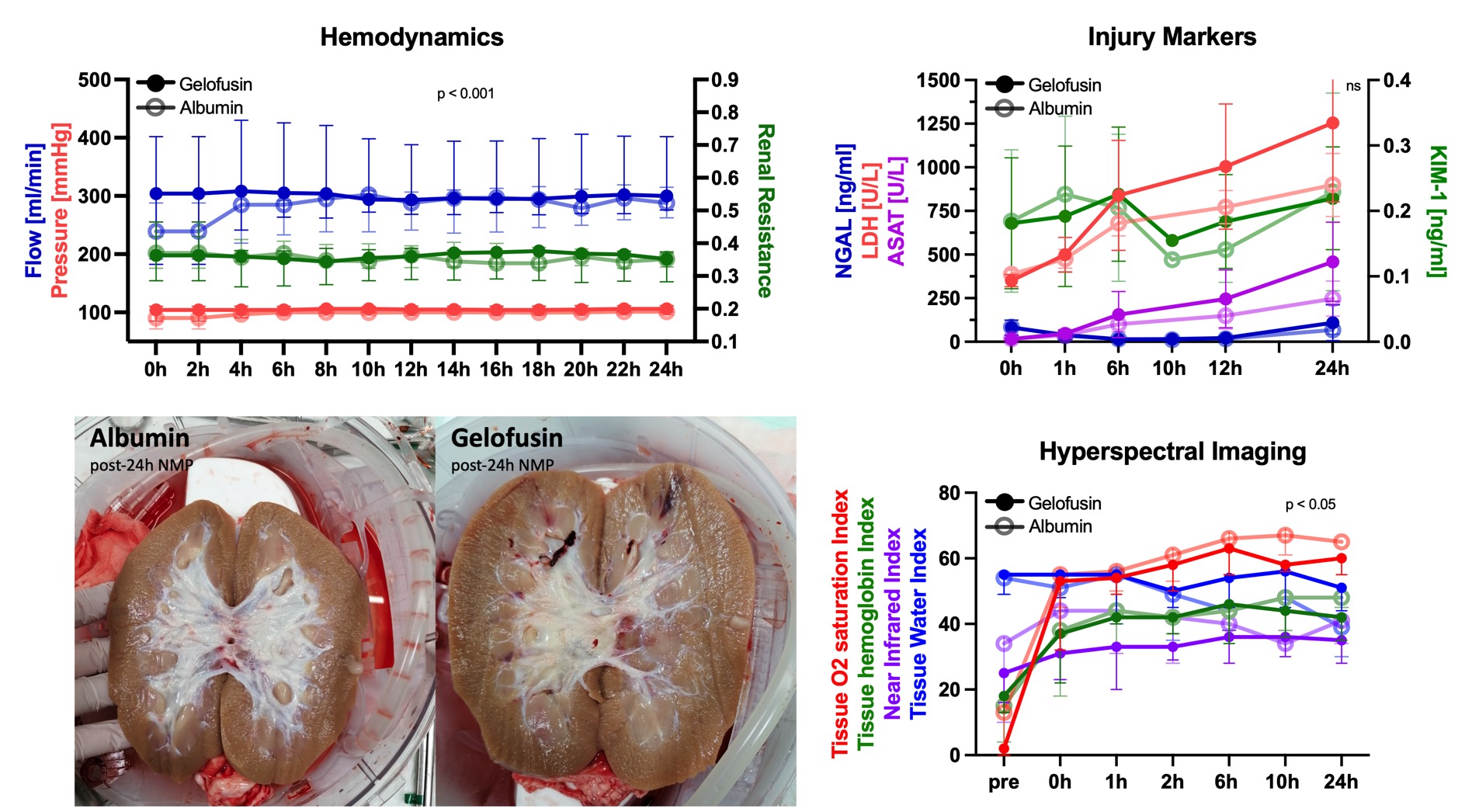Gelofusin causes edema formation in normothermically perfused porcine kidney grafts
Marlene Pühringer1, Bradley Hovan2, Piper Curtis2, Andrew Capulli2, Joshua Filgate2, Stefan Schneeberger1, Franka Messner1.
1OrganLife® Laboratory, Medical University of Innsbruck, Innsbruck, Austria; 2DEKA Research & Development Corp., Manchester, NH, United States
Introduction: Normothermic machine perfusion (NMP) may help to reduce the organ discard rate through more physiologically relevant organ quality assessment and extending preservation times. However, there does not exist a consensus on the ideal NMP perfusion protocol and perfusate composition. This study compares the impact of two clinically used volume expanders, gelofusin and human albumin, as perfusate components on perfusion quality during kidney NMP.
Methods: Five porcine kidney pairs were normothermically perfused for 24 hours with autologous, leukocyte filtered, whole blood diluted with either gelofusin or human albumin. A novel prototype kidney NMP device was used for continuous flow perfusion at 90 mmHg. Automated oxygenation and nutrient supply were managed by on-board sensors. Perfusion dynamics were recorded, perfusate and urine samples were obtained and analyzed for composition and injury markers throughout the perfusion duration. Hyperspectral imaging (HSI) was carried out and mitochondrial function was assessed via high-resolution respirometry.
Results: Comparable perfusion dynamics (Albumin vs. Gelofusin 294 ml/min vs. 298 ml/min, p = 0.42), and oxygen- and glucose consumptions (3.1 mL/min vs. 3.1 mL/min, p = 0.15; and 7.1 mg/min vs. 7.2 mg/min, p = 0.84; Albumin vs. Gelofusin) were found. Use of Gelofusin resulted in a significant weight gain during NMP (delta mass -11 g vs. +78 g, p = 0.02). Consistent with this finding, a higher tissue water content in the gelofusin group was recorded (p = 0.016). Tissue O2 saturation (p = 0.016), perfusion (p = 0.031) and hemoglobin indices (p = 0.016) were higher in kidneys perfused with albumin but mitochondrial capacity and efficiency were similar between groups. A moderate rise in injury markers with Gelofusin (ASAT 101 U/L vs. 156 U/L, p = 0.31; LDH 680 U/L vs. 840 U/L, p = 0.31) but lower NGAL and KIM-1 (26.6 pg/mL vs. 21.8 pg/mL, p = 0.99; KIM-1 154 pg/mL vs. 208 pg/mL, p = 0.69) was recorded. As expected, lower total albumin (433 mg/dL vs. 307 mg/dL; p < 0.0001) and protein content (4.7 g/dL vs. 3.6 g/dL, p = 0.01) were found in the gelofusin group.
Conclusion: Gelofusin resulted in significantly more edema formation and inferior tissue perfusion when used as a colloidal perfusion component in kidney NMP.

[1] normothermic machine perfusion
[2] kidney preservation
[3] perfusate composition
[4] colloidal solution
[5] edema
[6] large animal study
[7] porcine
[8] graft assessment
